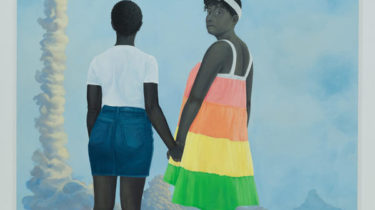In 2020 Baltimore Museum of Art will just purchase ladies’ specialty

The Baltimore Museum of Art (BMA) has revealed plans that it will just purchase workmanship by ladies one year from now. At the present time, just four percent of the exhibition hall’s assortment is by female craftsmen.
As a major aspect of the BMA’s 2020 Vision activity, the historical center will likewise grandstand at any rate 20 shows highlighting work from a various scope of ladies, including Elissa Blount Moorhead.
For Moorhead, the first occasion when they saw theirself reflected in a masterpiece, it wasn’t in a historical center. It was in their parent’s home, experiencing their father’s record collections. The Funkadelic collection fronts of Pedro Bell included dark ladies in advanced settings, encompassed by brilliant oranges and blues.
“I just remember looking at the album covers and reading them, and recognizing they were black women,” Moorhead said. “And thinking they looked like people I knew, even though they were psychedelic.”
Presently a set up craftsman, Moorhead’s work will be included in a presentation one year from now. Different shows incorporate works previously highlighted by Georgia O’Keeffe, Grace Hartigan and others, as a feature of the exhibition hall’s arrangement.
The BMA’s choice was over two years really taking shape.
“I would say the 2020 Vision is just an extension of a code of ethics that has been deeply embedded within the museum,” said Christopher Bedford, the museum’s director. “Building a permanent collection is building a story for all time.”
The choice occurred under the administration of ladies all through the exhibition hall. The leading body of trustees is led by Clair Zamoiski Segal and Asma Naeem is boss custodian.
Yayoi Kusama at 90: How the ‘unfamiliar virtuoso’s turned into a global sensation
The BMA’s move was heartily gotten by activists who were pushing for more noteworthy decent variety in the workmanship world for a considerable length of time.
“There are so many women who ought to be honored and known,” said longtime women’s art advocate Cindy Nemser. “I say it’s a beginning. Imagine if this had happened in 1972.”
The BMA’s acquisitions spending plan for one year from now is generally $2 million. Buying a craftsman’s work goes further than just briefly obtaining it from another assortment. It reserves the craftsman and enables guardians to include their for a considerable length of time to come.
“Purchasing art changes the nature of the permanent collection,” said Amelia Jones, professor and vice dean of research at the Roski School of Art and Design at University of Southern California. “We could have 150 years of just collecting women and that might start to address it.”
Moorhead trusts that a significant change will reestablish historical centers’ significance in the 21st century.
“I’m hoping that all of us can start to think about how patriarchy and hierarchy has really diminished people’s interest in museums and cultural centers,” Moorhead said. “This will enliven your audience. It’s just the right thing to do.”
They trusts their work will support different grown-ups and youngsters feel seen, similar to the Pedro Bell collection covers.
“I want to make work that’s not just a reflection, but really an extension of who I am and who we may be,” Moorhead said. “And when they walk through, they see something that is resonant and that reminds them I’m there, on the other side.”
Stephanie Anderson is a modern housewife who also known as a writer or publisher. She is housewife but her thinking level is mind blowing like Ayurveda doctor. She noted things about living day-to-day life, research on it and write these things as a news article. She works as a free lance author .
Disclaimer: The views, suggestions, and opinions expressed here are the sole responsibility of the experts. No journalist was involved in the writing and production of this article.
